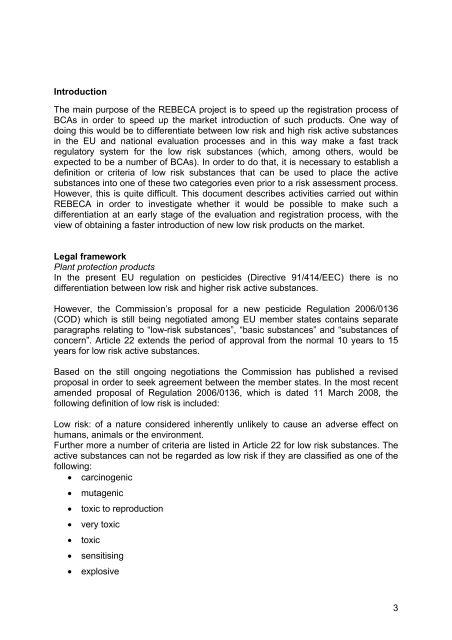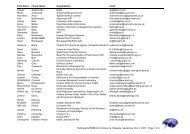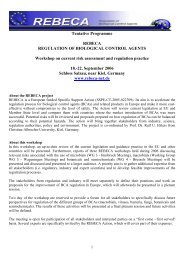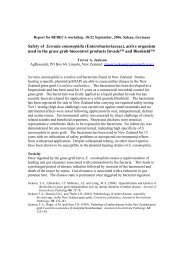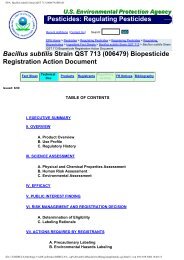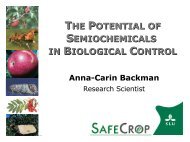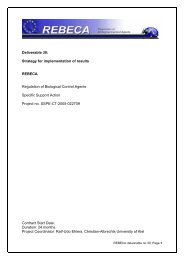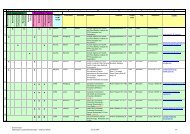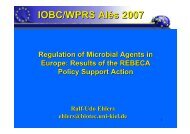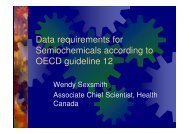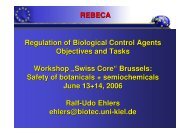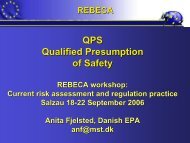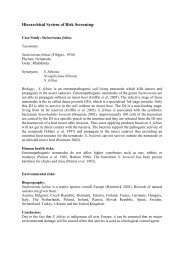Deliverable 28: Specification of low risk products REBECA ...
Deliverable 28: Specification of low risk products REBECA ...
Deliverable 28: Specification of low risk products REBECA ...
Create successful ePaper yourself
Turn your PDF publications into a flip-book with our unique Google optimized e-Paper software.
Introduction<br />
The main purpose <strong>of</strong> the <strong>REBECA</strong> project is to speed up the registration process <strong>of</strong><br />
BCAs in order to speed up the market introduction <strong>of</strong> such <strong>products</strong>. One way <strong>of</strong><br />
doing this would be to differentiate between <strong>low</strong> <strong>risk</strong> and high <strong>risk</strong> active substances<br />
in the EU and national evaluation processes and in this way make a fast track<br />
regulatory system for the <strong>low</strong> <strong>risk</strong> substances (which, among others, would be<br />
expected to be a number <strong>of</strong> BCAs). In order to do that, it is necessary to establish a<br />
definition or criteria <strong>of</strong> <strong>low</strong> <strong>risk</strong> substances that can be used to place the active<br />
substances into one <strong>of</strong> these two categories even prior to a <strong>risk</strong> assessment process.<br />
However, this is quite difficult. This document describes activities carried out within<br />
<strong>REBECA</strong> in order to investigate whether it would be possible to make such a<br />
differentiation at an early stage <strong>of</strong> the evaluation and registration process, with the<br />
view <strong>of</strong> obtaining a faster introduction <strong>of</strong> new <strong>low</strong> <strong>risk</strong> <strong>products</strong> on the market.<br />
Legal framework<br />
Plant protection <strong>products</strong><br />
In the present EU regulation on pesticides (Directive 91/414/EEC) there is no<br />
differentiation between <strong>low</strong> <strong>risk</strong> and higher <strong>risk</strong> active substances.<br />
However, the Commission’s proposal for a new pesticide Regulation 2006/0136<br />
(COD) which is still being negotiated among EU member states contains separate<br />
paragraphs relating to “<strong>low</strong>-<strong>risk</strong> substances”, “basic substances” and “substances <strong>of</strong><br />
concern”. Article 22 extends the period <strong>of</strong> approval from the normal 10 years to 15<br />
years for <strong>low</strong> <strong>risk</strong> active substances.<br />
Based on the still ongoing negotiations the Commission has published a revised<br />
proposal in order to seek agreement between the member states. In the most recent<br />
amended proposal <strong>of</strong> Regulation 2006/0136, which is dated 11 March 2008, the<br />
fol<strong>low</strong>ing definition <strong>of</strong> <strong>low</strong> <strong>risk</strong> is included:<br />
Low <strong>risk</strong>: <strong>of</strong> a nature considered inherently unlikely to cause an adverse effect on<br />
humans, animals or the environment.<br />
Further more a number <strong>of</strong> criteria are listed in Article 22 for <strong>low</strong> <strong>risk</strong> substances. The<br />
active substances can not be regarded as <strong>low</strong> <strong>risk</strong> if they are classified as one <strong>of</strong> the<br />
fol<strong>low</strong>ing:<br />
• carcinogenic<br />
• mutagenic<br />
• toxic to reproduction<br />
• very toxic<br />
• toxic<br />
• sensitising<br />
• explosive<br />
3


